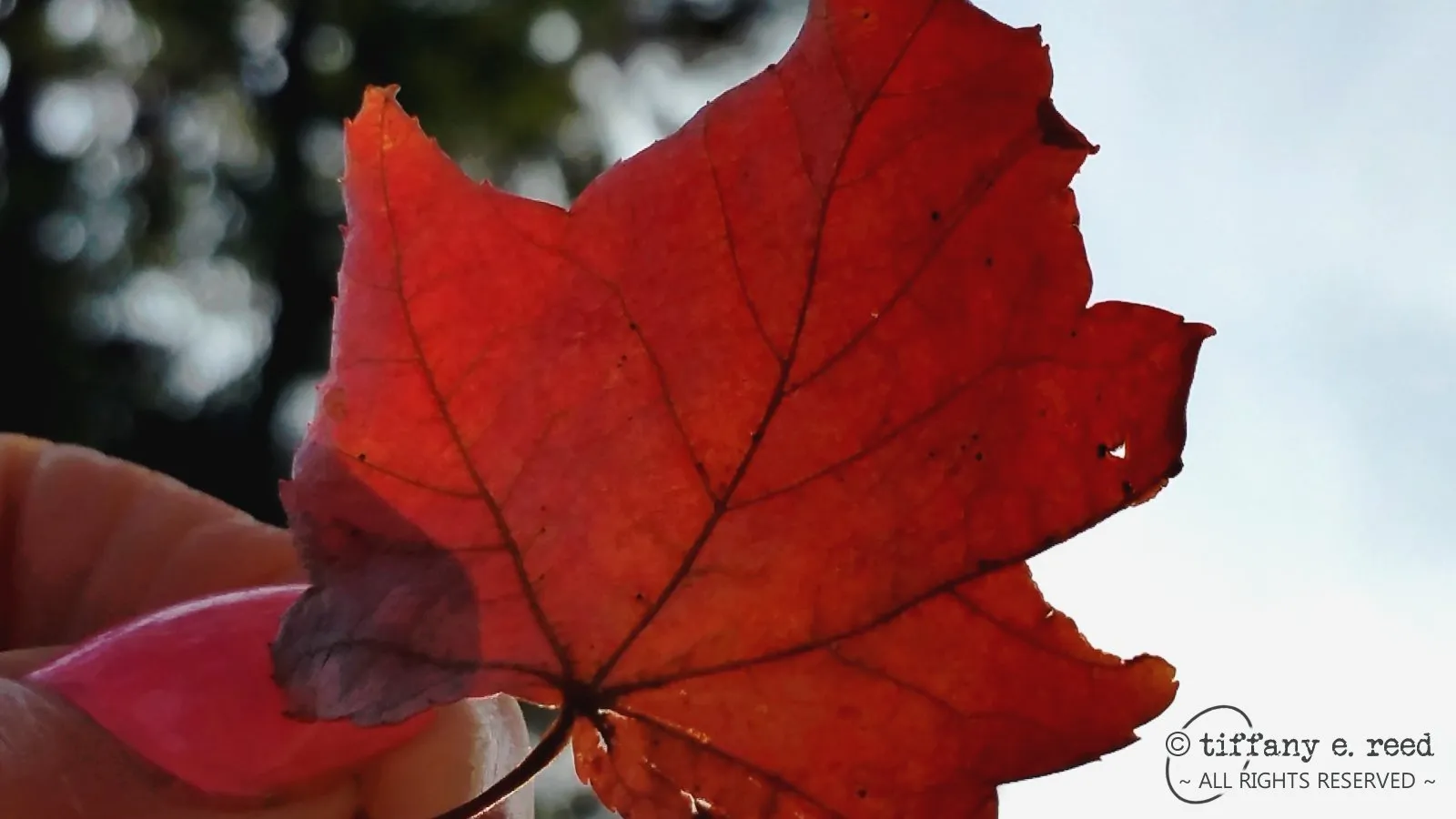All my life, I have been fascinated by color. The many different shades and hues are endlessly amazing. Even when editing a photo on the computer, the software color palette reports 16 million colors to be available!
Anyone who pays attention from year-to-year knows the amount of rain during the autumn influences the color of the leaves. "Too much rain" versus "too little rain" can affect the rate-of-change, intensity of the colors, and the duration of colors. Other factors come into play, too, such as how quickly the onset of cooler temperatures takes place.
 ~photo © by me~
~photo © by me~
I had also noticed that certain trees seem to exhibit certain colors, and figured it was merely a species-related phenomenon. But, it goes deeper than that, down in to the chemistry of the leaves.
According to Wikipedia:
Carotenoids are present in leaves the whole year round, but their orange-yellow colors are usually masked by green chlorophyll. As autumn approaches, certain influences both inside and outside the plant cause the chlorophylls to be replaced at a slower rate than they are being used up. During this period, with the total supply of chlorophylls gradually dwindling, the "masking" effect slowly fades away. Then other pigments that have been present (along with the chlorophylls) in the cells all during the leaf's life begin to show through. These are carotenoids and they provide colorations of yellow, brown, orange, and the many hues in between.
I always thought that the breakdown of chlorophyll was what contributed to ALL leaf coloration in autumn. However, there is more, as the Wikipedia article continues!
The reds, the purples, and their blended combinations that decorate autumn foliage come from another group of pigments in the cells called anthocyanins. Unlike the carotenoids, these pigments are not present in the leaf throughout the growing season, but are actively produced towards the end of summer. They develop in late summer in the sap of the cells of the leaf, and this development is the result of complex interactions of many influences—both inside and outside the plant. Their formation depends on the breakdown of sugars in the presence of bright light as the level of phosphate in the leaf is reduced.
So, now we know that there are other factors that come into play, too! Learning is fun! 😊
This is another entry in the ColorChallenge series which @kalemandra began. It's been such fun participating in it each day since I've been here! ![]()
———————————
See my other ColorChallenge posts ![]()
For a fabulous sisterhood supporting women on Steemit, check out:
For a great group of people who are serious about blogging, check out:
Return from Color Challenge Monday Red - "DYNAMICS OF AUTUMN" ~ © Tiffany E. Reed to 𝕜𝕚𝕥𝕥𝕪's Web3 Blog




